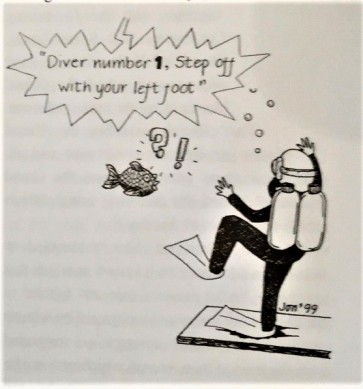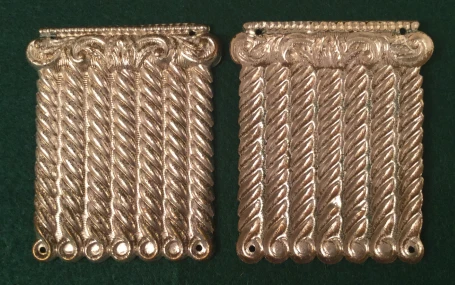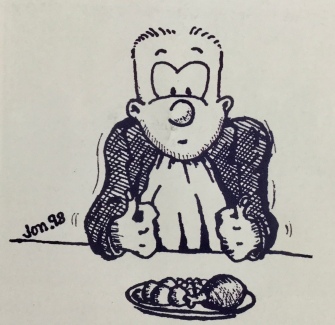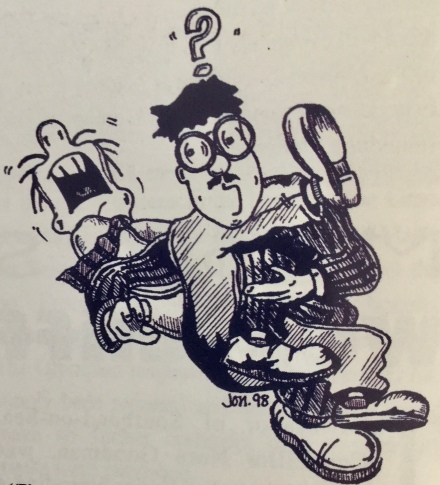An informal article examining Freemasonry’s long association with that four-legged ruminant
~~~~~
“Keep your back to the wall!”
“Make sure you are wearing clean underwear!”
“Watch out for the Goat!”

Are we really warned about such things as we approach the night of our Initiation? Well quite frankly, yes! However, putting this into prospective, we all know that it is no more than a schoolboy prank or rather, a gesture of brotherly affection.
Of course, there is absolutely no need to be pre-warned or concerned about anything in Freemasonry, but rituals throughout the world, particularly those of an initiatory nature, have, to say the least, always been shrouded in mystery and invariably invoke within us great visions of personal pain or suffering. Subsequently, the goat or shall we say Liber Capricornus, has probably been associated with Freemasonry since time immemorial.
Collins Dictionary provides us with the first clues to this association:
“Any sure-footed agile ruminant mammal with hollow horns, naturally inhabiting rough stony ground.”

The rough stony grounds the goat inhabits are normally high hilly type regions and mountains and they can often be seen in the most inaccessible places. Strangely enough, from mans early beginnings high places and mountains have always been associated with the abode of their Deity. The goat therefore was seen as an animal symbolising man in his eternal strivings to reach his God.

Greek Mythology introduced Pan, the man/goat personage and the early Dionysian artificers accepted this figure as the symbol of the Temple Builders. Temple construction was viewed by these early schools as a source of understanding the mystery and nature of God. This school produced the Ionic column, which literally held up the Temple, the symbolic home of their God.
Thus, we now have the Goat as a symbol of mans quest for his God and in conjunction with man, a supporter or cornerstone of God’s home.
Besides this representation, the goat as the astrological figure Capricorn, rules the sun when it returns from the darkness of the winter solstice and while in this sign it begins to resume its climb towards the spring equinox.
Apart from its early connections with man and in particular his fertility, it also had strong maternal associations. According to ancient mythology it was the she-goat Almathea, who fed the infant Jupiter with milk.
To the medieval occultists, especially the Rosicrucian’s, the goat symbolised the elemental energies of the earth, the sign of Saturn and the alchemical element derived from them. In the Tarot, the Devil is shown as a goat headed Deity with a man and woman chained to him. The early Celtic people worshipped Cernnunos, the goat headed, horned God of the wood. While the Templars were accused of worshipping the Goat of Mendes, a goat headed Deity being formed as both male and female. In covens, witches also saw the goat head as symbolising some ancient Deity.

The expression to “ride the goat” would appear to come from the medieval times when groups of Clerical Knights and Military Orders made up of priests, differentiated themselves from regular knights by choosing to ride upon goats rather than horses.
Of course, Freemasons will recognise the upturned hollow goats horn or cornucopia and know it has great significance for the Stewards of the Lodge. Their jewel of Office consists of a full cornucopia or horn of plenty, symbolising abundance, placed within the open arms of a pair of compasses denoting that the refreshments or contents of the horn of plenty are not to be wasted in extravagance, but to be used within the bounds of reason and propriety.

It was pobably the medieval priests of Christianity who began to equate the goat with the devil and all wickedness. Possibley because of Matthew 25: 31- 46 which explains what will happen when that Bright Morning Star (Revelations 22:16) rises. The sheep will be numbered among those on the right, a place reserved for those to inherit the Kingdom prepared for them from the foundation of the world. The left, is a place which is reserved for those considered goats, who will be cursed into everlasting fire prepared for the Devil and his Angels.

Traditionally, it has been the enemies of Freemasonry who have tried to ridicule our practices and in particular our Initiation ceremony. However, the failure of such falsehoods can be judged by the way Freemasons themselves join in this raillery.
But beware Brethren, this article comes with a warning! The next time somebody offers you some unconventional advice about our Craft, always remember that a true Freemason is obligated to “…..never reveal any part or parts, point or points of the secrets or mysteries of or belonging to Free and Accepted Masons in Masonry…..”
Therefore, if there is a goat, you can be sure you will be the last one to know about it.

*As a footnote to this article:
By far the funniest incident that happened to me during my twenty years as the Manager of the Local Masonic Hall was when a young Initiate, who was waiting quietly in the corner prior to the Festive Board, beckoned me over and whispered in my ear “When do I need this” and produced a large carrot from his trouser pocket. Yes! You guessed right, his proposer had advised him on the best way to keep the goat quiet during his Initiation, and he was merely following an experienced Mason’s instruction,
Reference Sources:
The Symbolism of the Goat – Eugene W Plawiuk
The Freemasons all in all – A.Holmes-Dallimore
 @Freemasonsareus
@Freemasonsareus  Freemasons Are Us
Freemasons Are Us
 freemasonsareus.wordpress.com
freemasonsareus.wordpress.com  @Freemasonsareus
@Freemasonsareus
 freemasonsareus@gmail.com
freemasonsareus@gmail.com
![]() @Freemasonsareus
@Freemasonsareus ![]() Freemasons Are Us
Freemasons Are Us![]() freemasonsareus.wordpress.com
freemasonsareus.wordpress.com ![]() @Freemasonsareus
@Freemasonsareus![]() freemasonsareus@gmail.com
freemasonsareus@gmail.com




































































